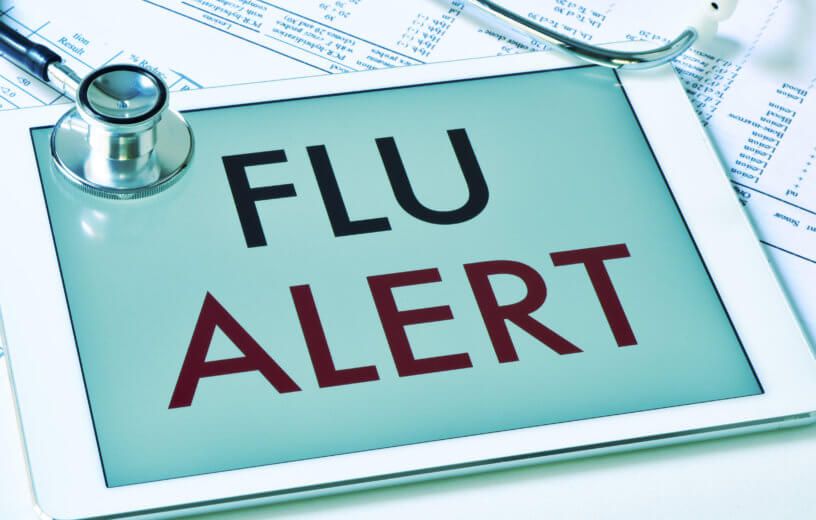NEW YORK — Remember life without masks and social distancing? While the world may be anxious to get back to pre-2020 living, a new study warns that as soon as pandemic safety precautions end, the flu will make a big comeback. Columbia University scientists report that COVID-19 safety measures have been helping to protect the public from influenza, but that means overall flu immunity has waned over the past two years or so.
Over the first ten weeks of widespread COVID-19 safety measures, influenza rates dropped by 60 percent. Once those rules expire, however, researchers believe far more people than usual will come down with the flu.
“In the short term, measures to control the spread of the coronavirus will likely continue to suppress the number of influenza infections, but after these measures are relaxed, with greater population-wide immune susceptibility to influenza could lead to a large outbreak,” says senior study author Sen Pei, PhD, assistant professor of environmental health sciences, in a university release. “This year, it’s more important than ever to get your flu shot. While we’re rightly focused on protecting ourselves against COVID-19, we shouldn’t forget about the flu, which can be fatal.”
COVID could impact flu seasons for years to come
Researchers used a computer model of influenza A/H1 and B, two influenza strains that circulated in early 2020, to quantify just how much both flu incidence and transmission declined following the implementation of non-pharmaceutical interventions (NPI) in most U.S. states on March 15, 2020. An “NPI” is just another term for a pandemic public safety measure such as travel restrictions, school closings, social distancing, and mask-wearing. The team also predicted influenza transmission rates on a national scale over the next five years.
The model predicts that as more and more safety measures end, a “large-scale influenza outbreak” will likely occur. Moreover, future flu seasons will be more intense as well, before eventually returning to the usual pre-pandemic numbers. American influenza deaths have varied widely over the past decade. For instance, while 2011-2012 saw 12,000 deaths, 2017-2018 experienced 61,000.
“Our projections show that the downstream, ripple-effects of pandemic public health measures could persist for a number of years,” Prof. Pei adds.
COVID safety mandates actually making the flu worse?
Researchers explain that a number of still-unknown factors will dictate the severity of the post-COVID flu outbreak. One major element is just how long these safety measures will stay in place. The longer people continue to social distance and wear masks, the greater the number of individuals more susceptible to influenza. Ironically, this suggests that U.S. states and areas with high levels of COVID-19 safety measure compliance may actually be more at risk of a severe flu outbreak.
The decline in global flu activity due to COVID-19 safety measures will also likely make it harder to produce effective vaccines for future flu strains. Finally, the recent observed suppression in flu activity and frequency may cause an uptick in new strains, particularly a new form of the A/H3 strain which has a high mortality rate.
On the other hand, certain conditions may promote a less severe future flu outbreak. Study authors admit that it’s possible the observed suppression of influenza during the 10-week study period may be an overestimation due to many people avoiding hospitals and doctors in general during the pandemic.
Alternatively, it’s possible that antigenic escape, and not waning immunity, is the main driver of flu susceptibility within a given population. Antigenic escape refers to mutations within a virus allowing it to evade an immune system. If that were to be the case, the flu would actually have a hard time mutating while public safety measures are in place.
The study appears in The Journal of Infectious Diseases.
